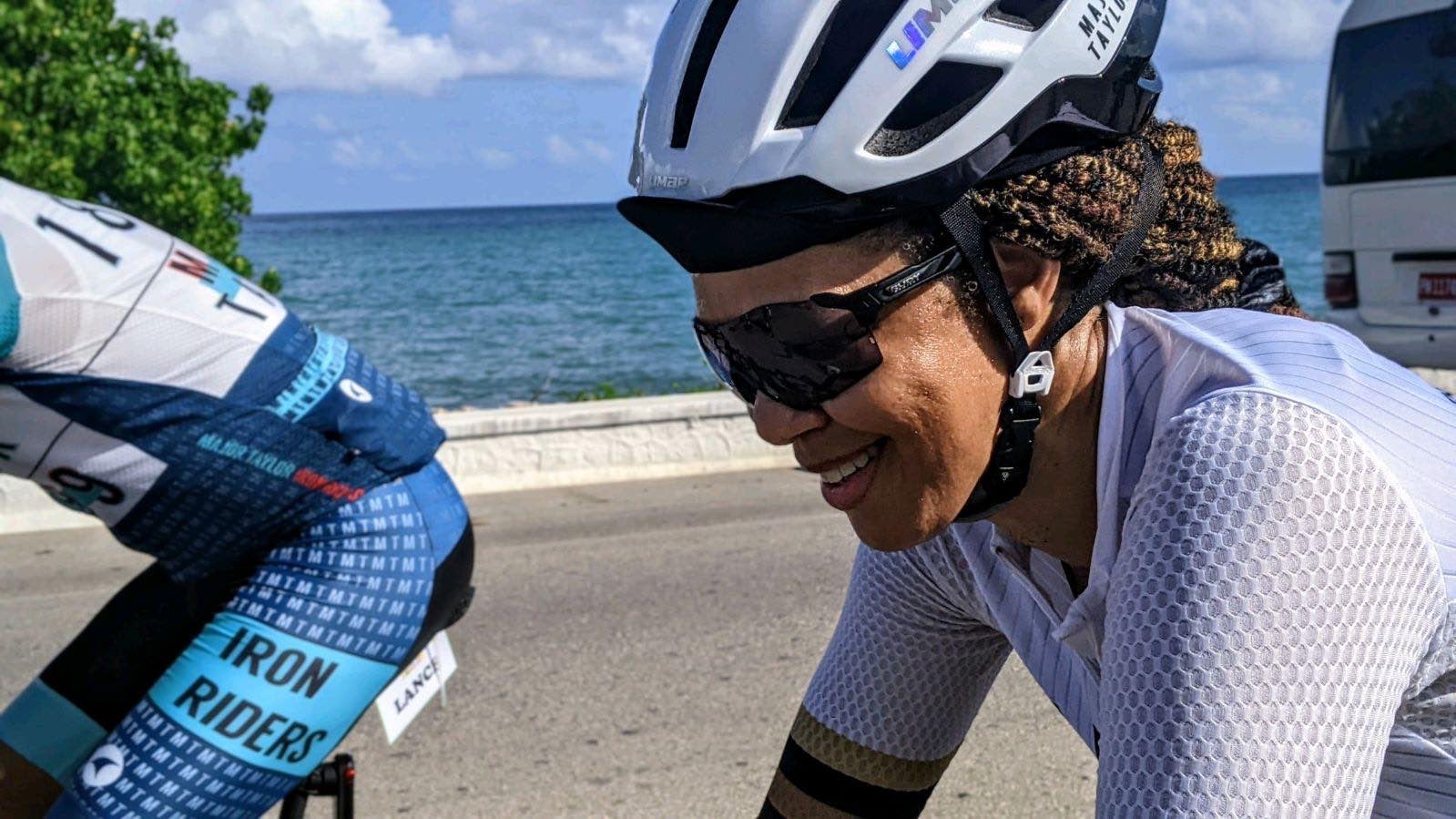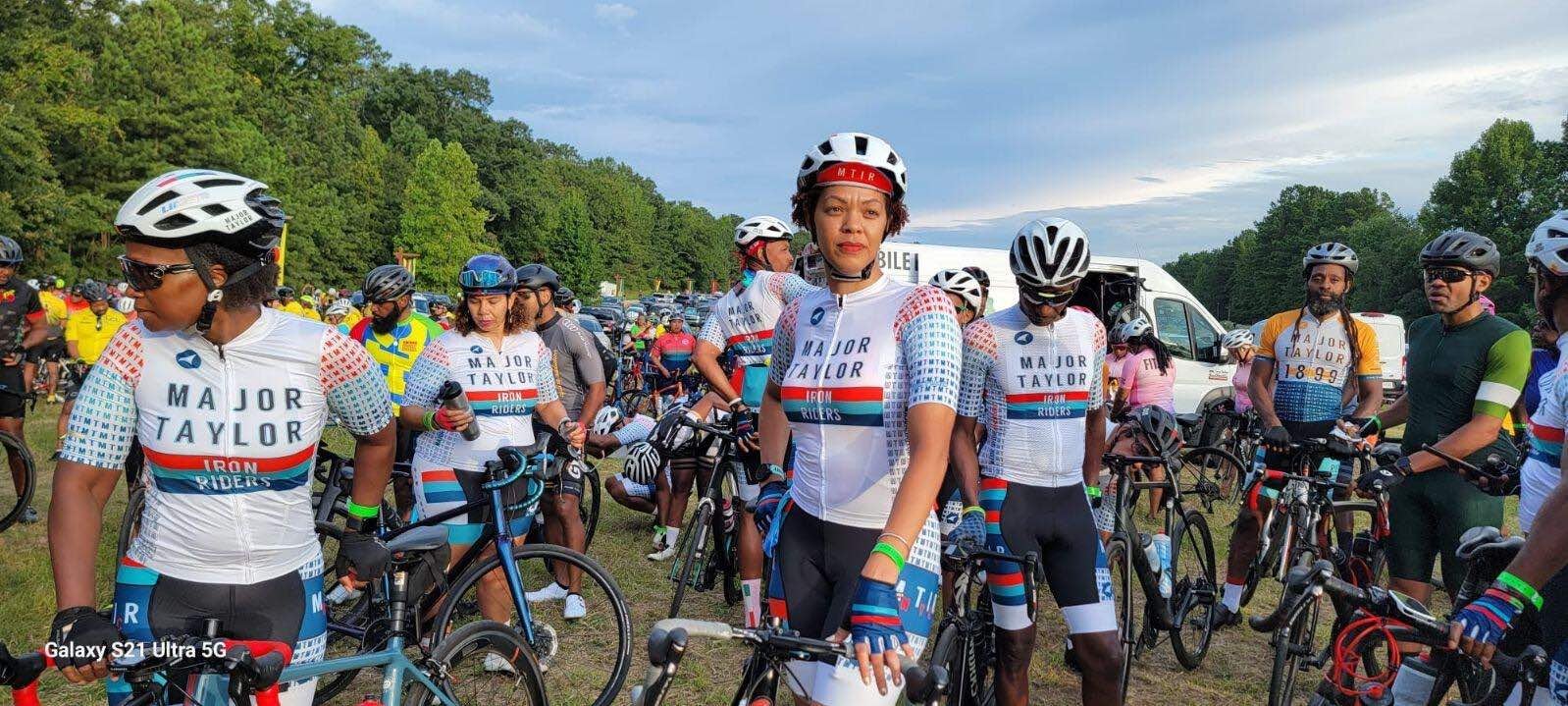
May is National Bike Month, and the conversation around Black history and cycling would not be complete without discussing Marshall Walter “Major” Taylor. He was an undisputed GOAT–Schwinn Bikes hails him as “the greatest sprinter of all time. He won numerous competitions and world titles, set multiple world records, and was one of the very first Black celebrity athletes.”
Between 1898 and 1899, Taylor “established seven world records” in the quarter mile, one-third mile, half-mile, two-third mile, three-quarter mile, one mile, and two-mile distances. At that time, racism was rampant, especially in the cycling world, and when he was allowed to race, Taylor “often had to deal with insults, fouls, and outright sabotage (like ice water thrown on him, and nails on the track) perpetrated by both competitors and spectators.”
Unfortunately, even though it’s been almost one hundred twenty-five years since Taylor’s dominant run, the legacy of exclusion still remains. “There’s not enough African Americans involved in professional cycling,” Major Taylor Iron Riders President Dereka Hendon-Barnes said.

The data backs these assertions. “Cycling is one of the whitest sports in the world,” sports website Andscape reports. “During the 2021 International Cycling Union (UCI) World Tour — which features the sport’s premier races, including the Giro d’Italia and Tour de France — less than 1% of the riders were Black.” In addition, during the 2022 Tour de France, there were no Black riders. The year before, there was only one featured “Black cyclist in the peloton: Nic Dlamini, the first Black South African in the Tour. The reasons for cycling’s lack of diversity and inclusivity at all levels are plentiful, from a lack of outreach to an exclusionary history the sport often seems unwilling to move past.”
“It’s not just Black or brown people that aren’t represented in cycling. It’s also women,” continued Hendon-Barnes. It wasn’t until 2021, that the first Black woman joined “a professional road cycling team.” Ayesha McGowan didn’t make her racing debut until she was 26, but as she told Olympics.com, “A big part of this journey for me has also been creating space for other people to do this and hopefully showing other Black women, African American women, women of color, that they can be bike racers.”
Across the country, cycling groups inspired by Major Taylor’s legacy, such as the New York City-based Major Taylor Iron Riders, are aiming to change that and increase the number of Black and female cyclists.

Like McGowan, Hendon-Barnes also started cycling later in life. She told ESSENCE how she was inspired by her brother to get into the sport and used to ride the train down to “Brooklyn, go to South Street Seaport and I would rent this bike every day. One particular summer, I literally just explored, getting lost biking in the city. It hit me that I remembered the joy when I was a kid on my Huffy with a basket on the handlebar, riding around the neighborhood and that freedom of being on my bike.”
Major Taylor Iron Riders (MTIR) was officially founded in 2006 and something Barnes explained was created out of necessity. Before MTIR there was the Element Tour, which was started by “a couple of sisters who liked to ride bikes felt like they weren’t really accepted or included in what they were doing, so they started to own thing.” But when people were looking to ride fast, MTIR came into play, and the Iron Riders part of the name “derives from the Buffalo Soldiers, all Black infantry, who rode bikes during the war.”
“In 1897, the all-Black 25th Infantry Regiment Bicycle Corps embarked on an epic bicycle ride of more than 1,900 miles from Fort Missoula, Montana, to St. Louis, Missouri, as part of an experiment by the U.S. Army to determine the effectiveness of moving troops by bicycle,” per the Missouri State Parks website. “Called ‘The Great Experiment’ in national newspapers, the journey took 41 days to complete.”
For Hendon-Barnes, increasing representation is critical. “It is not due to lack of talent. It’s a lack of resources. It does cost a lot of money to do this. You have to be at the very top of the top to be able to be invited or have a way to get to the training facilities.” In addition, “people don’t know about these things at all because they just don’t see anyone that looks like them doing it.”
Hendon-Barnes is hopeful about the future of inclusion in the sport. “I have a standing rule whether you’re with the club or the race team: You’re gonna have to work but you will never be left behind.”







